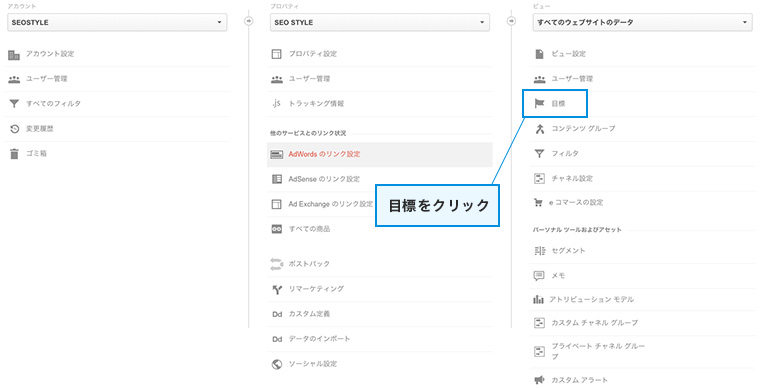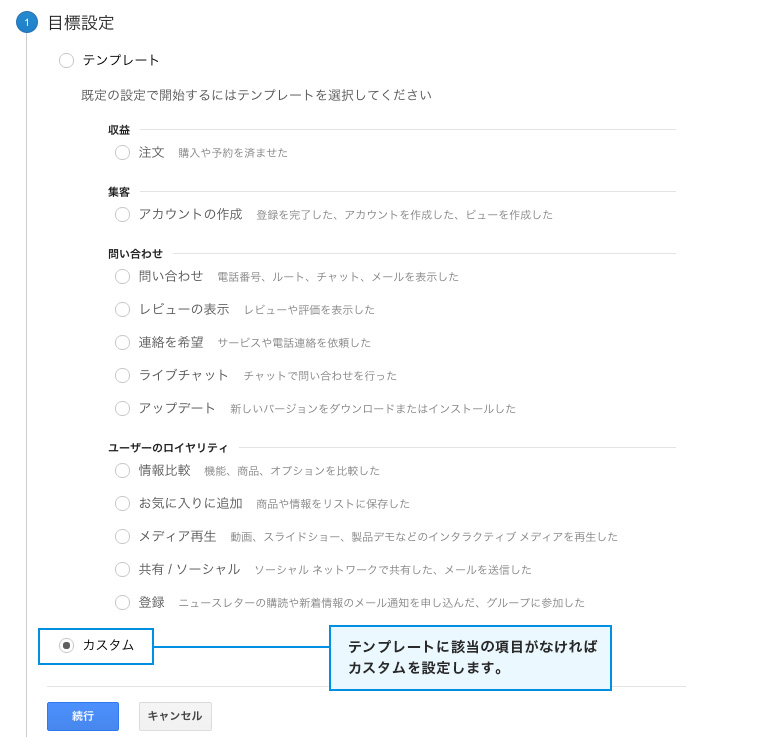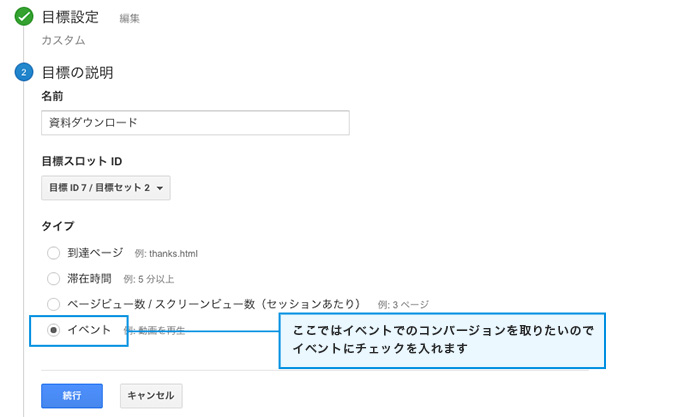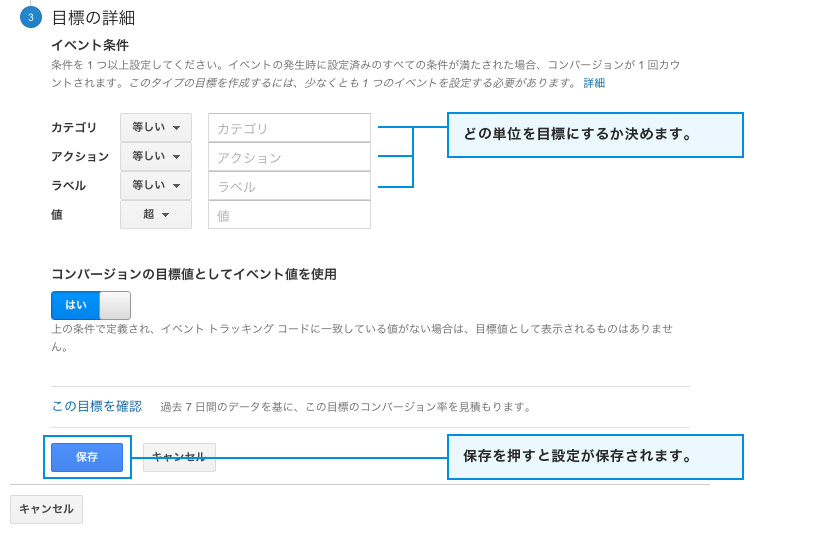[Google Analytics] Set goal setting and event tracking!
May 12, 2022 Tool introduction , Google Analytics , Access Analysis

You guys set the goals (conversion) of Google Analytics, right?
How do you set it?
The most common method is to set a goal to "display a specific page."
It is the same for any site to enter the form or "confirm screen" and "complete screen" by entering the form by "Inquiry" or "Inquiry".
Therefore, the number of times the "completion screen" is displayed can be regarded as the number of times that achieved the goal.
However, the goal may not be "displayed a specific page".
For example, if you like the "Download button" or "Banner Advertising".
In such a case, the goal setting cannot be set to "display a specific page".
Therefore, in such cases, it is necessary to measure the actions taken by users such as buttons, banner ads, and clicks on external links.
This time, I would like to explain how to set the event (conversion)!
Before that! It is important to note that the event tracking and the goal (conversion) settings are different (I was confused at first and confused ...).
Event tracking means measuring (tracking) the number of clicks and the number of DL (events) of the material (event).
In short, you can measure how many times you clicked and how many times you were downloaded.
And by setting a goal (conversion), it can be reflected as data for Google Analytic conversion.
In order, set up an event tracking code and set the event to the target (conversion) setting.
Install a tracking code
First, set up a tracking code in the elements you want to take.
Description Download
Here, a code has been installed on the link to the PDF materials download. You can now measure the number of downloads of PDF materials from Google Analytics.
Here I would like to explain the meaning of each element.

- 1. Onclick
- This is the JavaScript event handler.
This time, we want to measure the event called "clicked", so we use a JavaScript event handler called ONCLICK, but this event handler is available in various ways, so please set it according to the purpose you want to measure. - 2. `Send ',' EVENT ',
- Please do not change it because it is a fixed element for measuring with Google Analytics.
- 3. Category
- Name (optional) to segment the tracking target and group to make it easier to measure.
For example, it is useful when you want to measure the number of downloaded times for each type of material. - 4. Action
- Name the action (optional).
It is easy to understand if you have a name corresponding to the event handler. - 5. Label
- You can also name this as well.
The label is not an essential item, so it does not have to be entered, but it is convenient to put it when you want to get unique information. - 6. Values
- You can set value to the event by entering an integer.
After doing the above, check the report if it is actually reflected in Google Analytics.
The report of the event can be confirmed from the side menu of the report screen> Event> Top Event.
Set the target name and type
Select the corresponding site from the Google Analytics management screen, and click it.

Click the "New Target" button to see the "Goal Settings" screen.
You can set the event with the goal on this screen.

Set the target type
Set the target type. If there are no corresponding items in the pre -prepared template, set the custom.

Set the target name and type
I want to take a conversion at the event here, so check the event

Set goal event conditions
You can set goals in categories, action units, and labels.
Let's set according to the application.

For example, if you take an event for all files that can be downloaded and set "Download" for "Category", the goal is to aim for "action" and "label" of all code set in the category "Download". can.
After all settings are finished, press "Save" to save the target settings.
With the above, we have set a goal that can measure the user's movement.
It may not be easy at first, but it will be essential for improving the site, so if you have never used it, please try it!